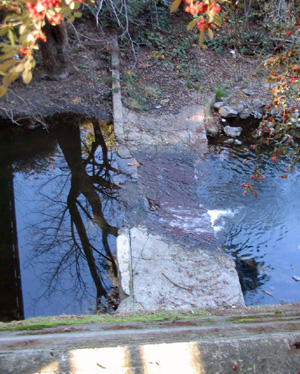Pacific Southwest, Region 9
Serving: Arizona, California, Hawaii, Nevada, Pacific Islands, Tribal Nations
EPA Contacts
Media Contact:
David Yogi (yogi.david@epa.gov)
Project Contacts:
(415) 972-3400 valiela.luisa@epa.gov
Videos (low resolution B-roll)
- Project Summary - Jamie Marincola (EPA's Water Program) (6MB, .wmv)
- Project Details - Joseph Issel (San Mateo Resource Conservation District) (28MB, .wmv)
- Footage of Deconstruction (26MB, .wmv)
For uncompressed, high resolution footage, please contact David Yogi.
Government Partners
NOAA Restoration Center
City of Menlo Park
City of Palo Alto
NOAA National Marine Fisheries Service
California Department of Fish and Wildlife
State Coastal Conservancy
U.S. Fish and Wildlife Service
Non-Government Partners
San Mateo County Resource Conservation District
San Francisquito Creek Joint Powers Authority
Committee for Green Foothills
Center for Ecosystem Mgmt & Restoration (CEMAR)
Fishery Foundation of California
Acterra
National Fish and Wildlife Foundation
Northwest Hydraulic Consultants
Santa Clara County Creeks Coalition
Santa Clara Valley Water District
San Jose Flycasters Association
American Rivers
Water Quality Grant Aids Native Fish Recovery in Palo Alto
San Francisco Bay Water Quality Improvement Fund
Projects funded through this program focus on restoring impaired waters and enhancing aquatic resources.
The Environmental Protection Agency (EPA), the National Oceanic and Atmospheric Administration’s National Marine Fisheries Service (NOAA), California State Coastal Conservancy (SCC), and San Mateo County Resource Conservation District (RCD) announced the near completion of work to remove a fish-passage barrier in Palo Alto, improving access to high quality spawning habitat for migrating native steelhead trout in the San Francisquito Creek watershed.
The Bonde weir was the last remaining barrier in the San Francisquito Creek for the steelhead, a federally-threatened species. The 100-year-old weir was built in tandem with concrete walls to protect the historic “El Palo Alto” redwood from streambank erosion. Removing the weir will improve the ability of steelhead to reach 40 miles of upstream spawning and rearing grounds. The project will also protect and enhance over 120 feet of streambed by adding new rock material designed to withstand the creek flows associated with a 100 year storm.
“For the first time in 100 years, steelhead trout will have additional access to miles of spawning grounds,” said Jared Blumenfeld, EPA’s Regional Administrator for the Pacific Southwest. “San Francisquito is an anchor watershed for restoring a healthy steelhead population in the Bay.”
San Francisquito Creek is one of the few remaining free-flowing Bay Area urban creeks not confined to a concrete channel, and is identified by the Center for Ecosystem Management and Restoration as one of eight priority watersheds for steelhead restoration. The creek was designated as “critical habitat” for steelhead by NOAA in 2005.
San Francisquito Creek, which serves as the boundary between the cities of Menlo Park and Palo Alto, drains into San Francisco Bay through a flood control channel. The main-stem of the creek is approximately 14 miles long and runs from near Searsville Dam to the Bay.
“We are honored to help protect one of the last remaining wild steelhead trout populations in the Bay Area by replacing a structure that strands young fish with natural streambed materials that create shelter and improve conditions for fish passage from Searsville Dam to the Bay,” said Kellyx Nelson, RCD’s Executive Director.
In addition to EPA’s $75,000 grant, the project was supported with funds from the NOAA Restoration Center, and the SCC, bringing total funding for the project to $309,400. The grant funds were awarded to the RCD to manage and coordinate the project.
The Bonde weir removal and restoration project is part of EPA’s San Francisco Bay Water Quality Improvement Fund that has invested over $28 million in 48 projects across the Bay region since 2008. Since the Fund’s inception, EPA’s investments have been matched with over $100 million from 69 partner agencies and organizations.

| Pacific Southwest NewsroomPacific Southwest Programs | Grants & FundingUS-Mexico Border | Media Center Careers | About EPA Region 9 (Pacific Southwest)A-Z Index |

